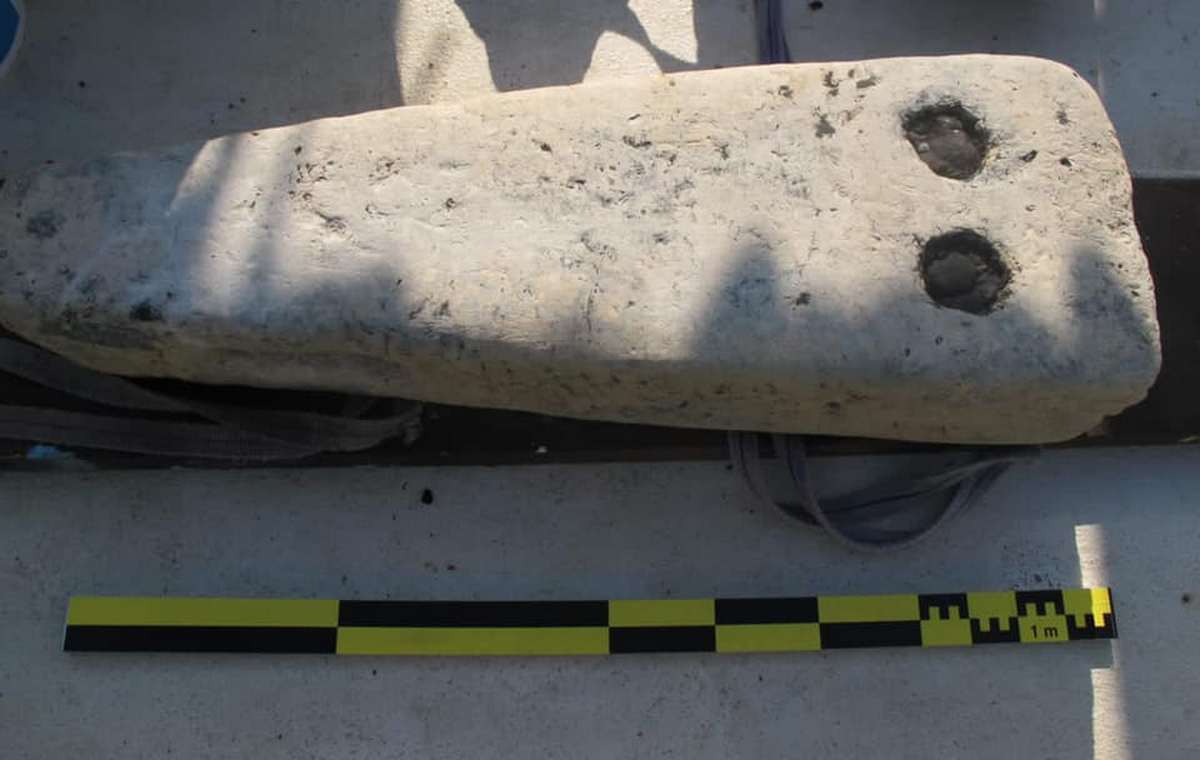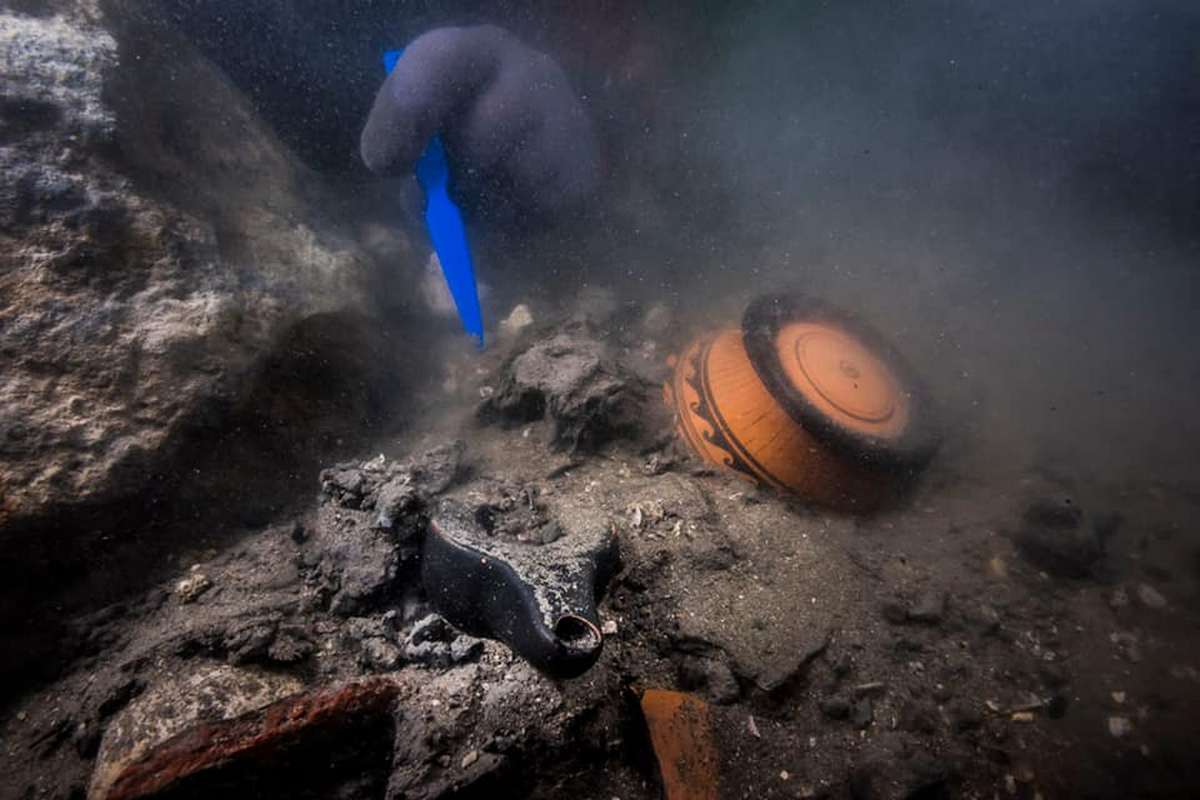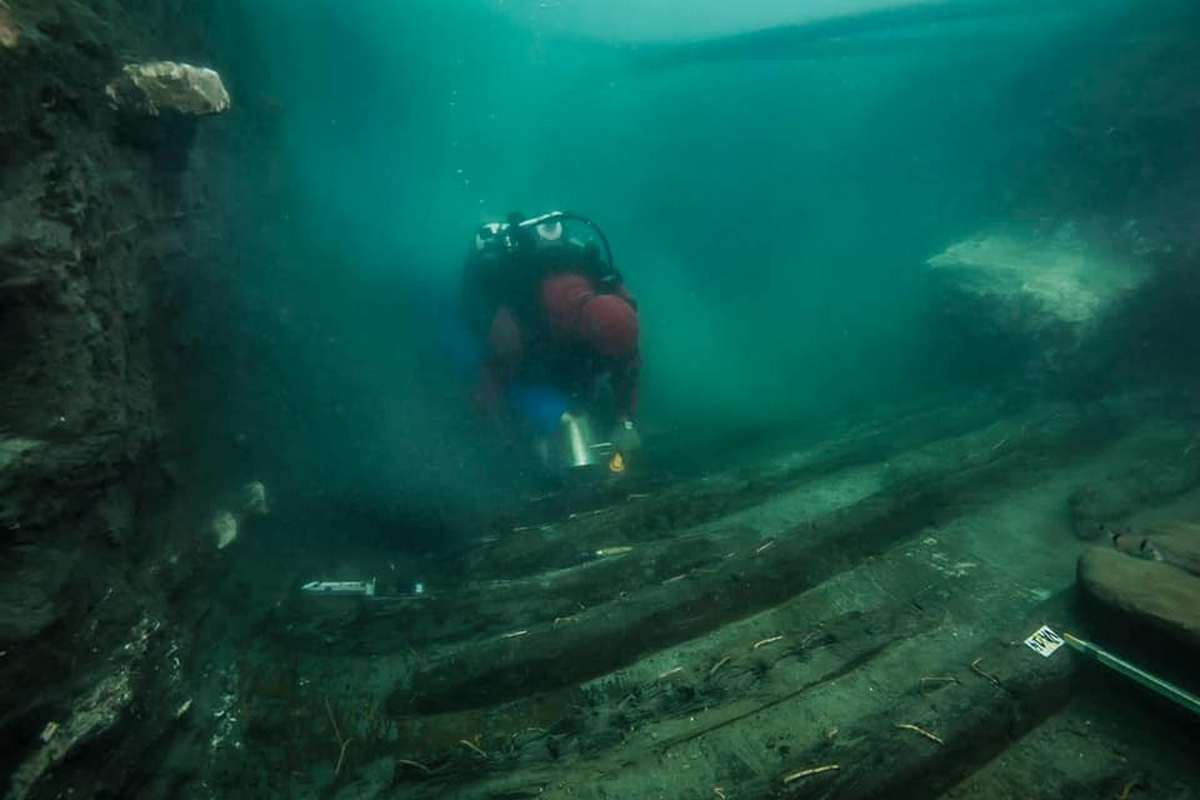Divers have found the rare remains of a warship in the ancient sunken city of Tony Heraklion – once Egypt’s largest port on the Mediterranean – and a funeral complex illustrating the presence of Greek merchants, the country said on Monday.
The city that controlled the entrance to Egypt at the mouth of the western branch of the Nile, dominated the area for centuries before the founding of Alexandria near Alexander the Great in 331 BC. N.
Destroyed and flooded along with a large area of the Nile Delta as a result of several earthquakes and tidal waves, Tonis-Herakleon was rediscovered in 2001 in the Gulf of Abu Kir near Alexandria, now the second largest city in Egypt.
The head of the Egyptian Antiquities Sector, Ayman Ashmavi, explained that the wreckage of the ship was found under about 5 meters of solid mud, which is the seabed mixed with the remains of the temple, using devices for underwater excavations, such as bottom profiling devices.

A warship discovered by an Egyptian-French mission led by the European Institute of Underwater Archeology (IEASM) sank when the famous Temple of Amun collapsed in the second century BC, next to which it was moored.
Frank Goddio, head of the IEASM mission, confirmed that the discovery of fast ships at the time was still very rare, and that Greek ships of this type were completely unknown until the discovery of the Punic ship Marsala (235 BC) – the only specimen we have is.
Preliminary research shows that the hull of a 25-meter flat-bottomed ship with oars and a large sail was built in the classical tradition, and also had features of ancient Egyptian construction, according to the Ministry of Tourism and Antiquities of Egypt.

In another part of the city, the mission found the remains of a large Greek burial area dating back to the first years of the IV century BC, the report said.
“This discovery perfectly illustrates the presence of Greek merchants who lived in this city,” the ministry said, adding that Greeks were allowed to settle here during the late dynasties of the pharaohs.
“They built their own shrines near the huge temple of Amun. They were destroyed at the same time, and their remains are mixed with the remains of an Egyptian temple.
These ruins testify to the richness of the temples of this city, which are now under the surface of the Mediterranean Sea, 7 km from the beach of Abu Kir.

